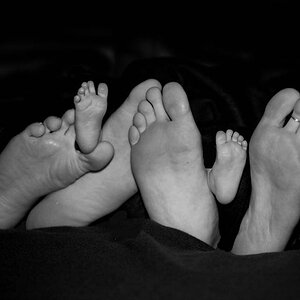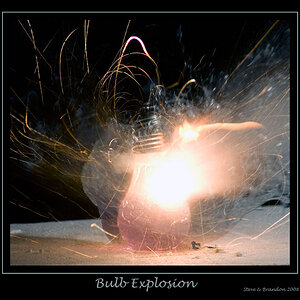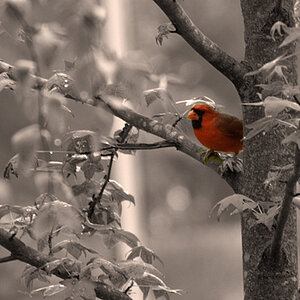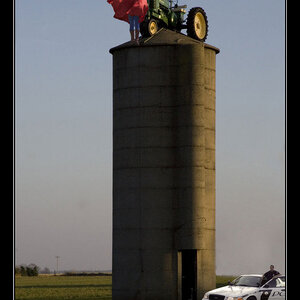Ysarex
Been spending a lot of time on here!
- Joined
- Nov 27, 2011
- Messages
- 7,137
- Reaction score
- 3,691
- Location
- St. Louis
- Can others edit my Photos
- Photos OK to edit
Art is defined foremost by intention and secondarily by form and purpose. If the author(s) claims her/his intention was to create art then it's art. The author need know or claim nothing more than they wanted to make it because they like how it looks or sounds or feels and they want to show it to you. That it may contain levels of additional meaning or convey a message is a bonus. Creating art is one of the clearest defining characteristics of the human species and as such is the province of all humans with or without special training or degrees etc.. We are all born artists, children's behavior being the irrefutable evidence thereof. When a child gets ahold of a lump of play dough and shapes it into a form that pleases them and then runs to their parent shouting look what I made, that's art -- defined by the intention to create. Recognized as a component of the desire to create is the desire to share the creation. With very rare exception artists share their intentional art.
On the other hand this is not art: a child who want to climb a tree but can't reach the lowest branch solves the problem by constructing a stack of bricks under the tree. That's creating a tool to solve a problem. In this juxtaposition art is often described as frivolous activity; it's not useful to any critical survival task. Architecture then is usually offered to counter that idea, but do our buildings and bridges really have to be visually engaging to be utilitarian? This is art defined by purpose. Art exists to be (useless) art and so much the better when art can embellish the utilitarian.
Defined by form art is physical -- sensual if you like. You have to make it from clay or stone or wood or paint or sounds or dancing or paper or string or etc. And then literature is usually offered to counter that definition. We embrace literature as art even though it seems weak on the physical requirement. So art isn't that simple, that's OK. And you really haven't experienced poetry right until you've heard it. I have a friend who's a poet. A couple months ago we met for dinner and he surprised me with a poem he'd written for me. I had him read it to me. Wow! But it's OK to read poetry too. I've read my poem a couple times since I got it.
So is it Art? Here's a couple lines from a poem by Kipling The Conundrum of the Workshops that graces all of my course syllabi: "And the first rude sketch that the world had seen was joy to his (Adam) mighty heart. Till the Devil whispered behind the leaves, 'It's pretty, but is it art?'" For those who can't figure it out or can't accept the most inclusive definition that allows us all to revel in the joy of it all like the child artists of our birth the words of Paul Strand offer an appropriate comment. "Whether a watercolor is inferior to an oil, or whether a drawing, an etching, or a photograph is not as important as either, is inconsequent. To have to despise something in order to respect something else is a sign of impotence."
Yes some art is bad. So be it and move on. If you let the bad art start you down the path of arguing about definition exceptions and exclusion clauses and rankings and classifications you've fallen into a trap that ultimately hurts you as you deprive yourself the opportunity to delight in the wonderful experiences that all the arts offer.
Joe
On the other hand this is not art: a child who want to climb a tree but can't reach the lowest branch solves the problem by constructing a stack of bricks under the tree. That's creating a tool to solve a problem. In this juxtaposition art is often described as frivolous activity; it's not useful to any critical survival task. Architecture then is usually offered to counter that idea, but do our buildings and bridges really have to be visually engaging to be utilitarian? This is art defined by purpose. Art exists to be (useless) art and so much the better when art can embellish the utilitarian.
Defined by form art is physical -- sensual if you like. You have to make it from clay or stone or wood or paint or sounds or dancing or paper or string or etc. And then literature is usually offered to counter that definition. We embrace literature as art even though it seems weak on the physical requirement. So art isn't that simple, that's OK. And you really haven't experienced poetry right until you've heard it. I have a friend who's a poet. A couple months ago we met for dinner and he surprised me with a poem he'd written for me. I had him read it to me. Wow! But it's OK to read poetry too. I've read my poem a couple times since I got it.
So is it Art? Here's a couple lines from a poem by Kipling The Conundrum of the Workshops that graces all of my course syllabi: "And the first rude sketch that the world had seen was joy to his (Adam) mighty heart. Till the Devil whispered behind the leaves, 'It's pretty, but is it art?'" For those who can't figure it out or can't accept the most inclusive definition that allows us all to revel in the joy of it all like the child artists of our birth the words of Paul Strand offer an appropriate comment. "Whether a watercolor is inferior to an oil, or whether a drawing, an etching, or a photograph is not as important as either, is inconsequent. To have to despise something in order to respect something else is a sign of impotence."
Yes some art is bad. So be it and move on. If you let the bad art start you down the path of arguing about definition exceptions and exclusion clauses and rankings and classifications you've fallen into a trap that ultimately hurts you as you deprive yourself the opportunity to delight in the wonderful experiences that all the arts offer.
Joe


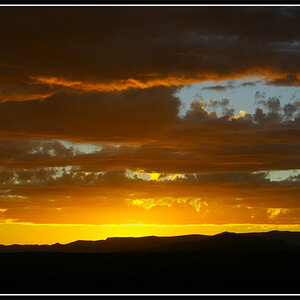
![[No title]](/data/xfmg/thumbnail/31/31706-3e429b21053f11072ed2e5b37c019073.jpg?1619734964)
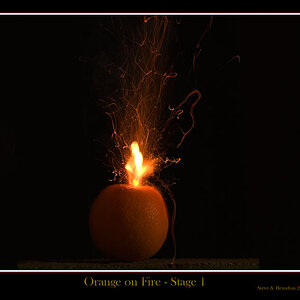
![[No title]](/data/xfmg/thumbnail/37/37111-64f64f2c8371420041bf39244ff12117.jpg?1619737882)

![[No title]](/data/xfmg/thumbnail/37/37113-886cb28b1e3fb197bdd00a9148269407.jpg?1619737882)
![[No title]](/data/xfmg/thumbnail/37/37114-2bba6b6cc4df1fe53588503fb35af8dd.jpg?1619737883)

